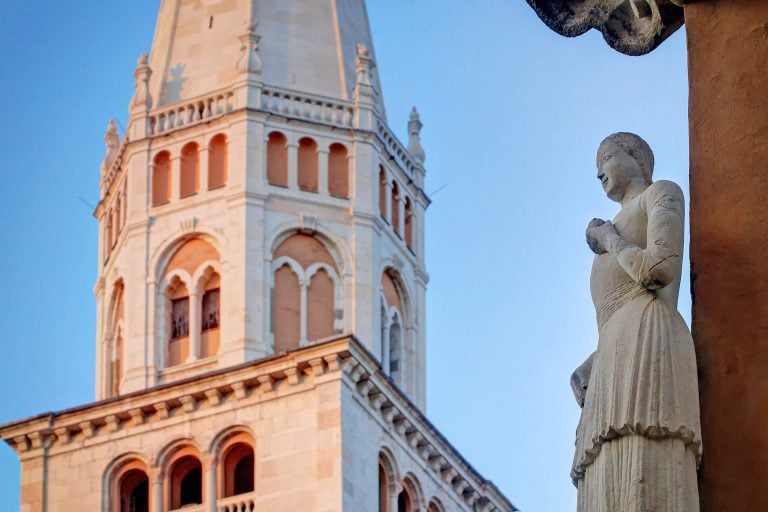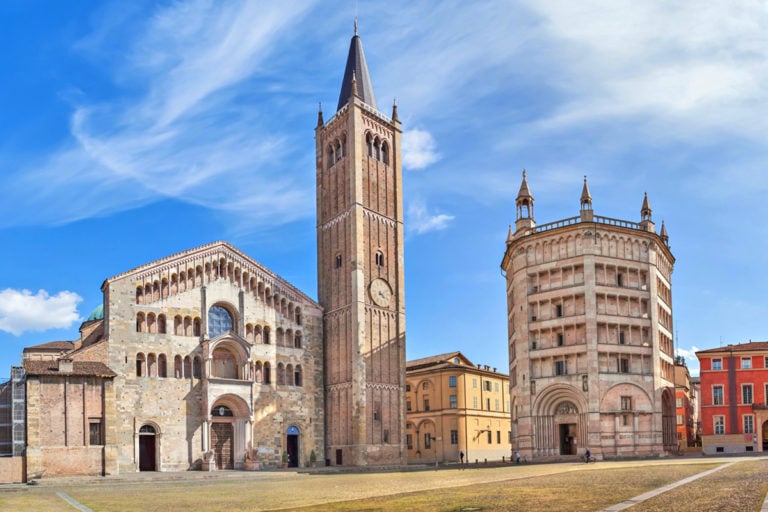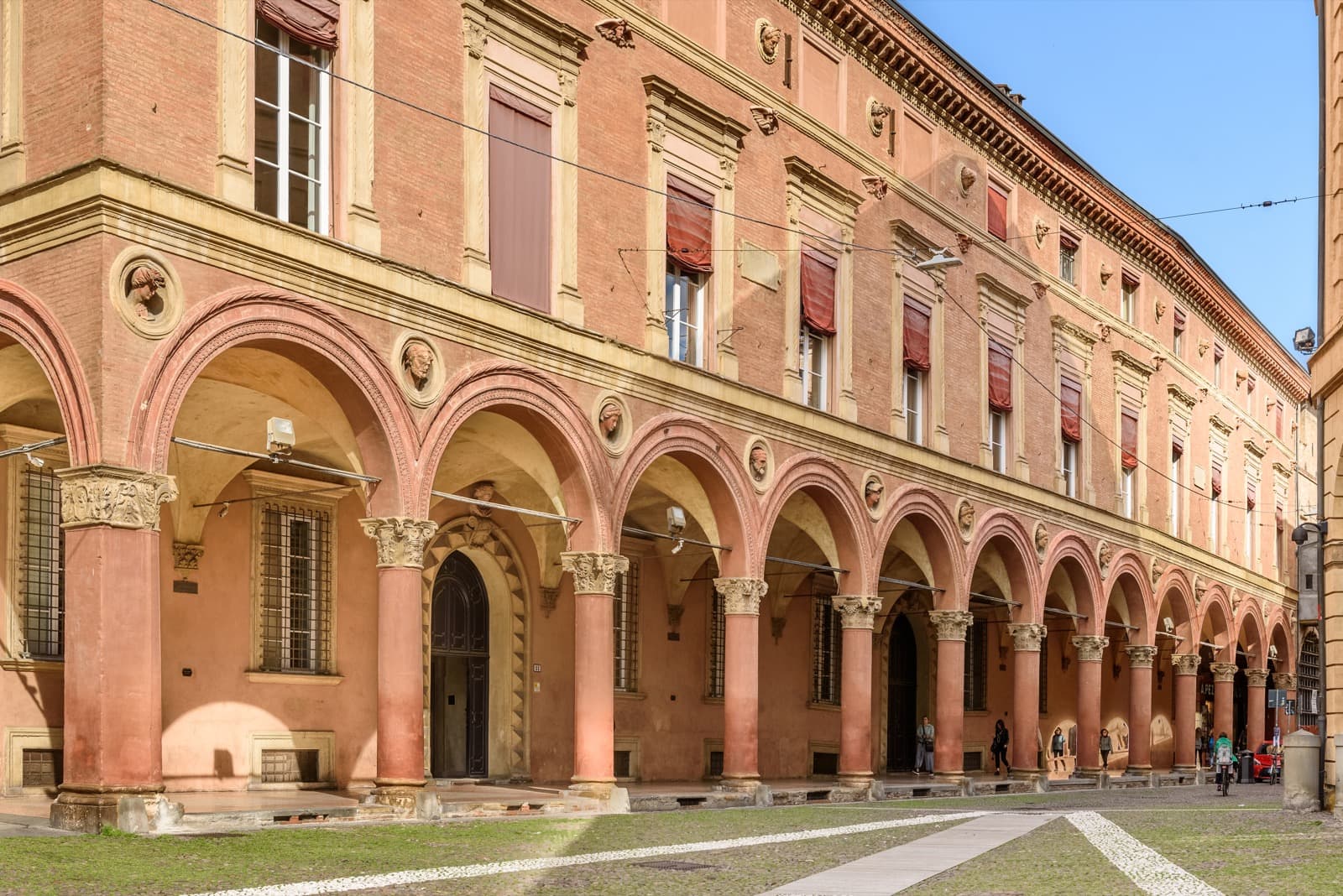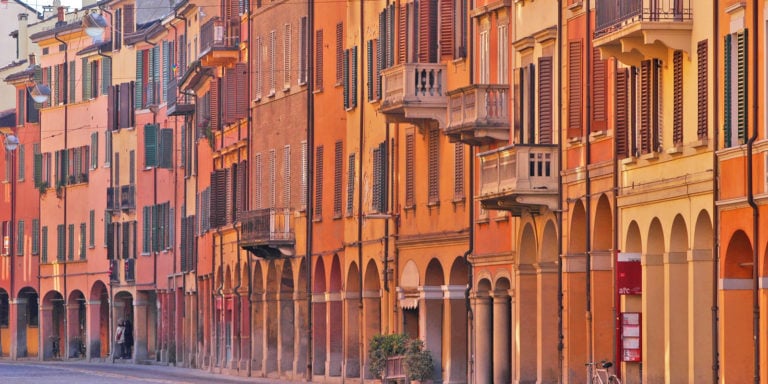Being used to walking around with our eyes down, staring at the screen, we often fail to notice the beauty that surrounds us. Sometimes we just need to raise our eyes to the sky to find an unexpected sight: a starry night, a flock of swallows in flight, a wonderful work of art.
Indeed, art offers us many opportunities to interrupt our daily routine, lift our heads and immerse ourselves in a whirlwind of brushstrokes, chiaroscuro and trompe l’oeil. Yes, we are talking about the frescoed domes that cover the church altars, as well as the painted vaults in ancient noble residences. Charged with religious or mythological symbols, they are like open books just waiting to be leafed through carefully.
Follow us on a tour of the historical and religious buildings housing some of the most impressive vaults and domes in Emilia-Romagna, from Piacenza to Ravenna.
Cathedral Dome - Piacenza
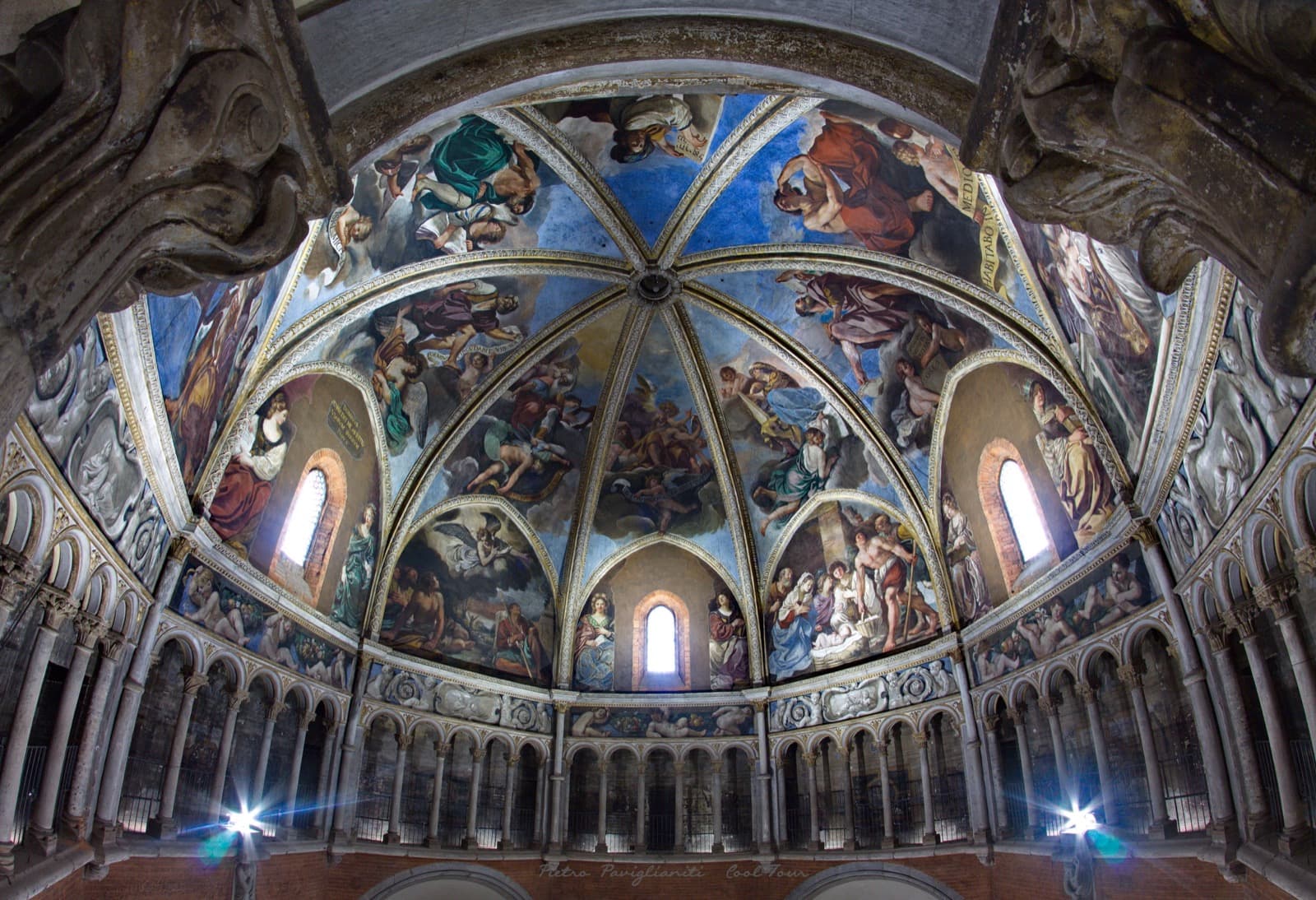
Let’s start our journey from Piacenza, more precisely from the Cathedral dedicated to Santa Maria Assunta and Santa Giustina, built between the 12th and 13th century. An example of Romanesque architecture that holds a pleasant surprise.
In addition to housing a cycle of frescoes by the masters Ludovico Carracci and Camillo Procaccini, the cathedral in Piacenza is also home to a great masterpiece of the so-called Emilian school by the painter Giovanni Francesco Barbieri known as Guercino.
While it is not the only work by the artist from Cento we can admire in Emilia-Romagna, it is only here that we can climb up to the dome and come face to face with his frescoes, painted between 1626 and 1627.
Having arrived in the city to complete the work of Morazzone – who died shortly after work began – Guercino painted six of the eight dome segments with as many Old Testament prophets (Haggai, Hosea, Zechariah, Ezekiel, Micah and Jeremiah), as well as the four underlying lunettes with scenes from the New Testament and finally the frieze’s cherubs.
For full details on the ascent to the dome please refer to the website of the Municipality of Piacenza.
The Three Domes of Correggio - Parma
In Parma there are three recommended domes, all of them painted by the same hand, that of Correggio (1489-1534), sharing bold perspectives and sublime optical illusions.
These are three religious buildings located in the city centre, just a few minutes’ walk from each other, which conceal as many vaults frescoed by the Renaissance master.
Chamber of Saint Paul
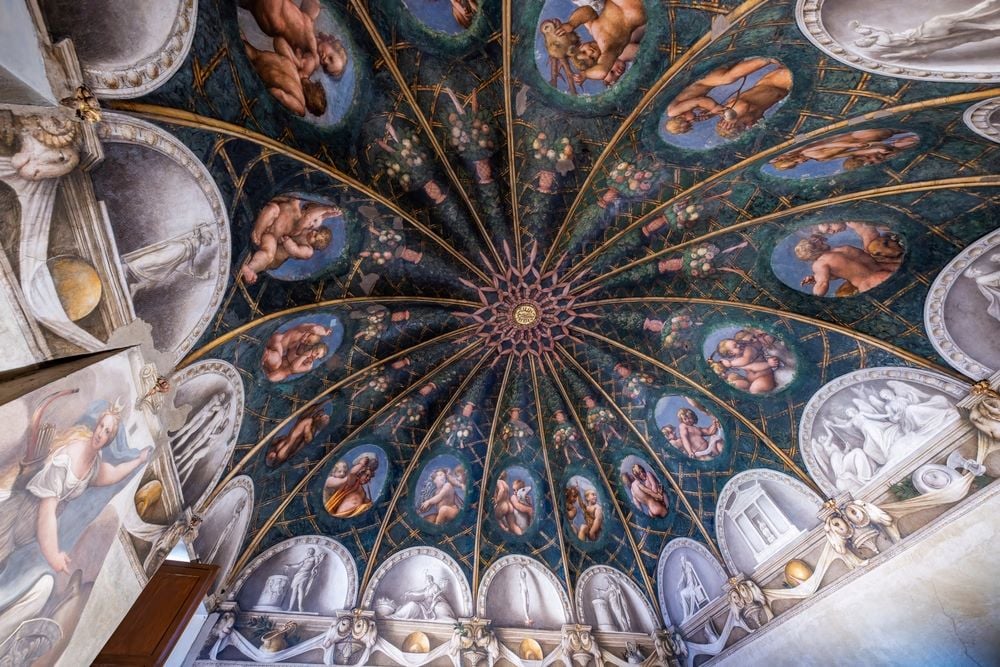
Located inside the former monastery of San Paolo, the Chamber of Saint Paul is really a feast for the eyes. This masterpiece created between 1518 and 1519 is one of Correggio’s earliest fresco works in Parma, and one of his most influential.
Entering the room we are transported into a painted garden: by playing with perspective, the artist created a natural environment culminating in the pergola of the vault, divided into sixteen segments and animated by rich festoons and delicate putti. Further down we find a sequence of lunettes with trompe l’oeil painted statues.
Church of San Giovanni Evangelista
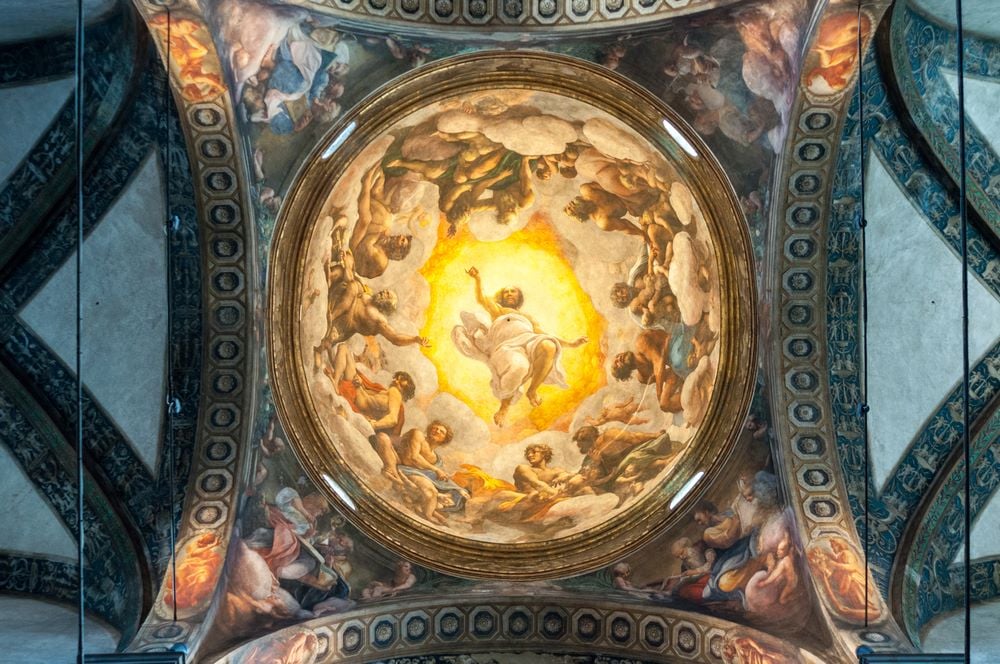
Following the success of his frescoes in the Chamber of Saint Paul, Correggio obtained two more important commissions in Parma.
The former was the decoration of the Church of San Giovanni Evangelista, where he painted an impressive Vision of St. John both for its colour intensity and for its technique, the so-called sfondato. The figures of the apostles, arranged in a circle, and Christ himself suspended in the centre of the vault are placed within an illusory open sky.
For this work Correggio also decided to eliminate all architectural features, thus moving away from his 15th-century predecessors.
Parma Cathedral
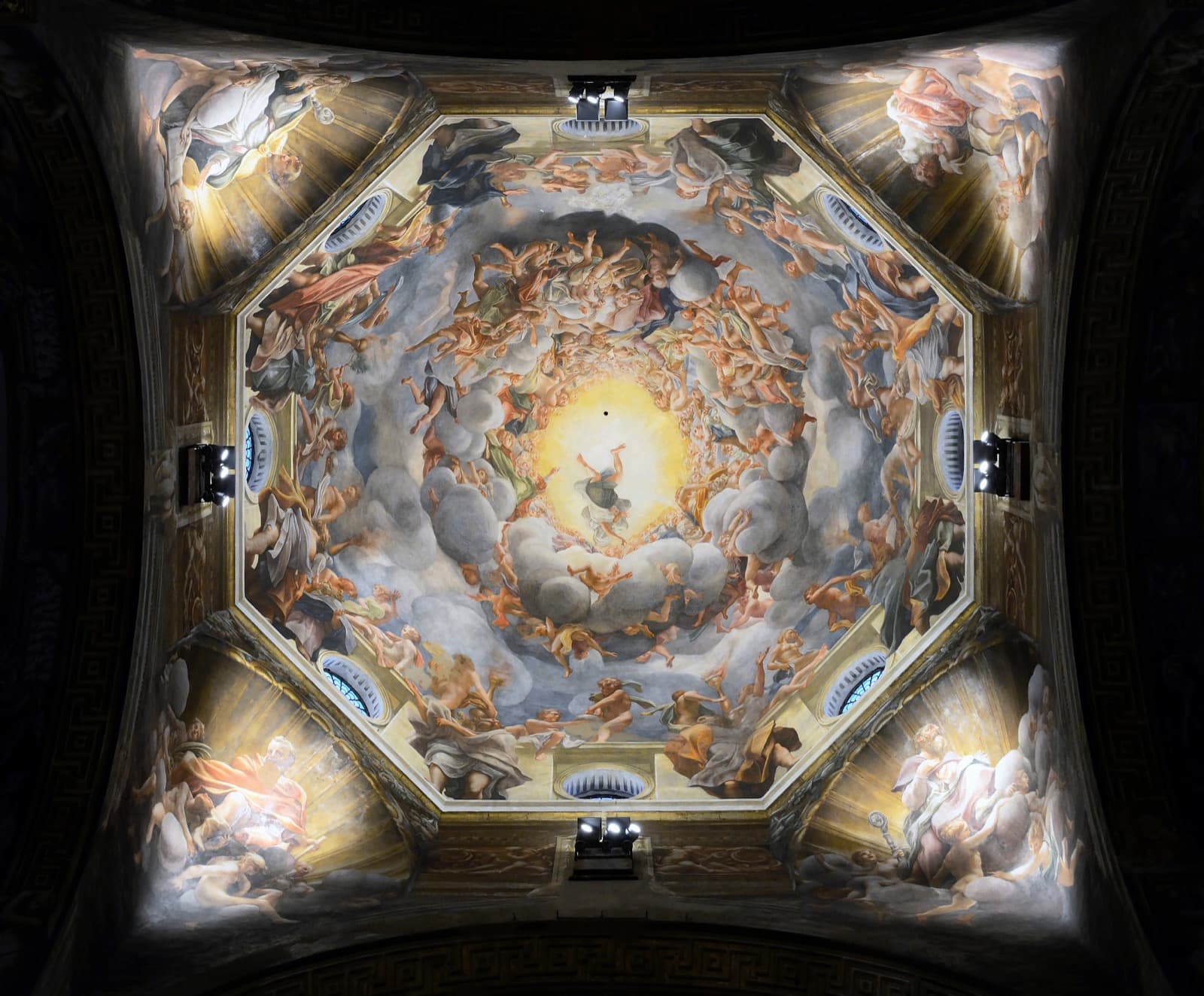
Let’s head for the Parma Cathedral to find out Correggio’s latter commission. Here, he was engaged from 1524 to 1530 in the depiction of the Assumption of the Virgin.
Just as in the Church of San Giovanni Evangelista, the artist deals with the decoration of the dome, focusing on the construction of a space devoid of architecture. The result is an animated vortex of clouds and human figures in flight (saints, angels, patriarchs) that envelops itself more and more until it reaches the centre of the dome and its illusionistic opening towards a deep yellow sky.
Palazzo Ducale - Sassuolo
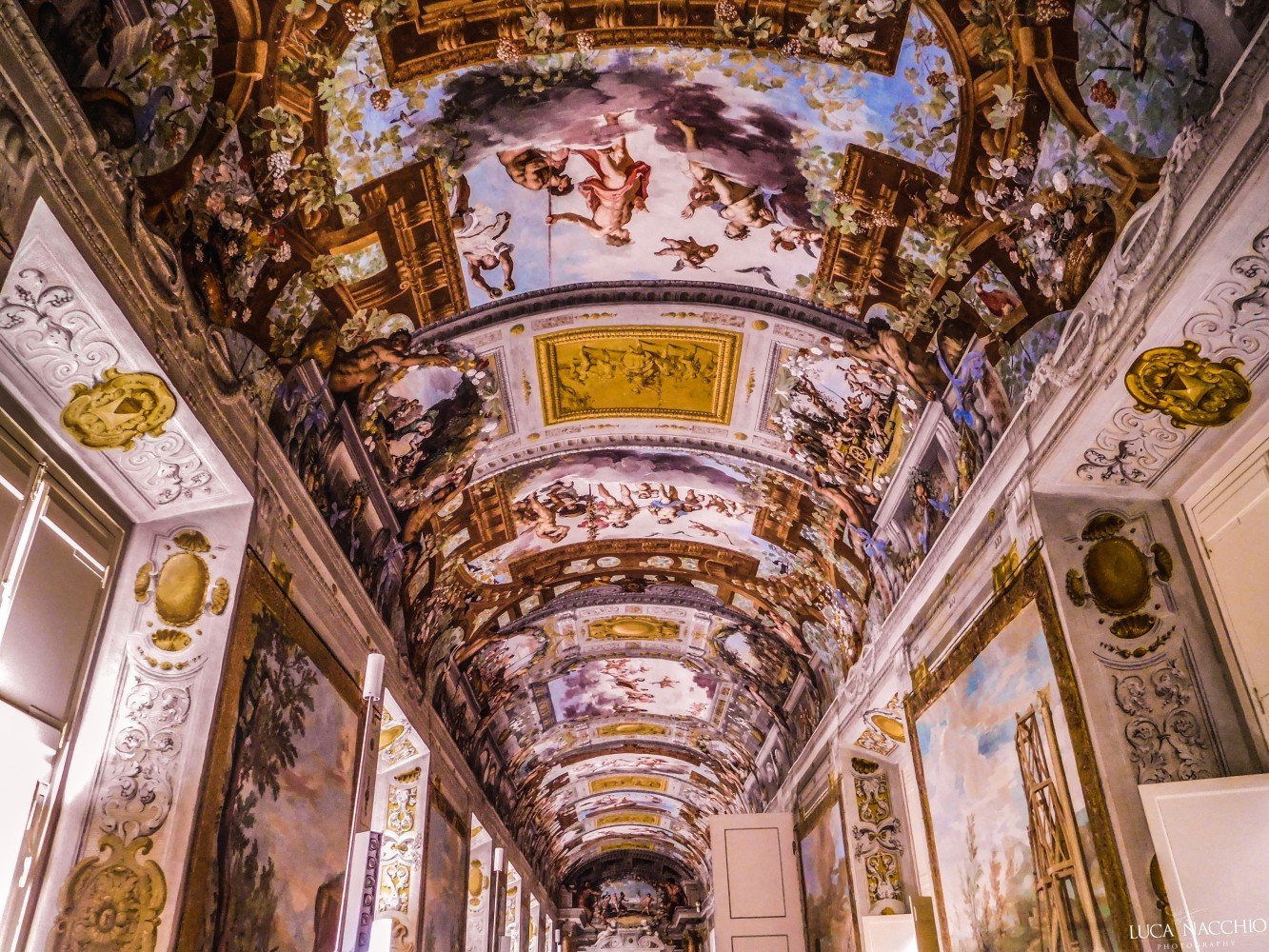
As for the Palazzo Ducale in Sassuolo, we are not examining just one vault, but an entire set of decorations. This incredible example of Baroque art and architecture, built in 1634 at the behest of Francesco I d’Este, houses an extensive collection of frescoed ceilings with mythological, literary and allegorical themes exalting the Este family.
Such a wide-ranging work was carried out by the quadraturists Angelo Michele Colonna and Agostino Mitelli, among others; however, the most prominent among them was Jean Boulanger, a French artist who worked at the court of Francis I and to whom we owe much of the decorations in the palace.
While visiting the palace, we will come across pictorial marvels such as the Gallery of Bacchus, the Hall of the Guards and many other rooms in which we can gaze in wonder.
Rocchetta Mattei - Bologna
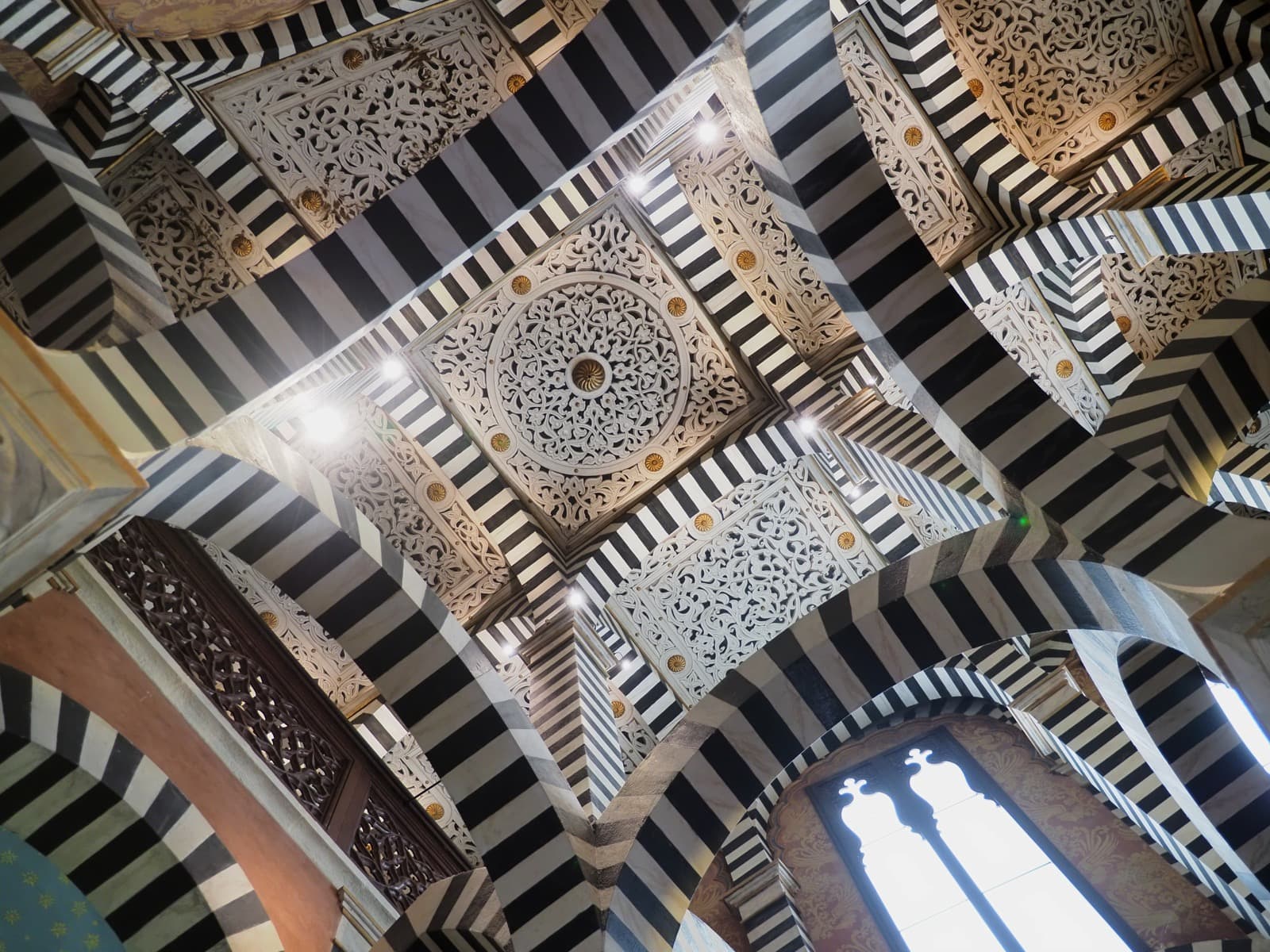
What we find inside the Rocchetta Mattei in Grizzana Morandi, on the Bolognese Apennines, is an unexpected and decidedly sui generis dome, just like the structure in which it stands.
The Rocchetta was the home of the multi-talented Count Cesare Mattei, who had it built in the second half of the 19th century in an eclectic style. Visitors not only have the opportunity to discover the count’s unique history, but also to embark on a journey through the most varied artistic movements: from medieval to Gothic, from Art Nouveau to Moorish.
It is precisely the Arab-Moorish style that has inspired the extraordinary Chapel and its vault, a series of alternating black and white banded arches inspired by the Mezquita in Cordova, and supporting inlays decorated with gold florals. But don’t be misled: the ceiling inlays are not carved in wood, but painted on canvas.
Mausoleum of Galla Placidia - Ravenna
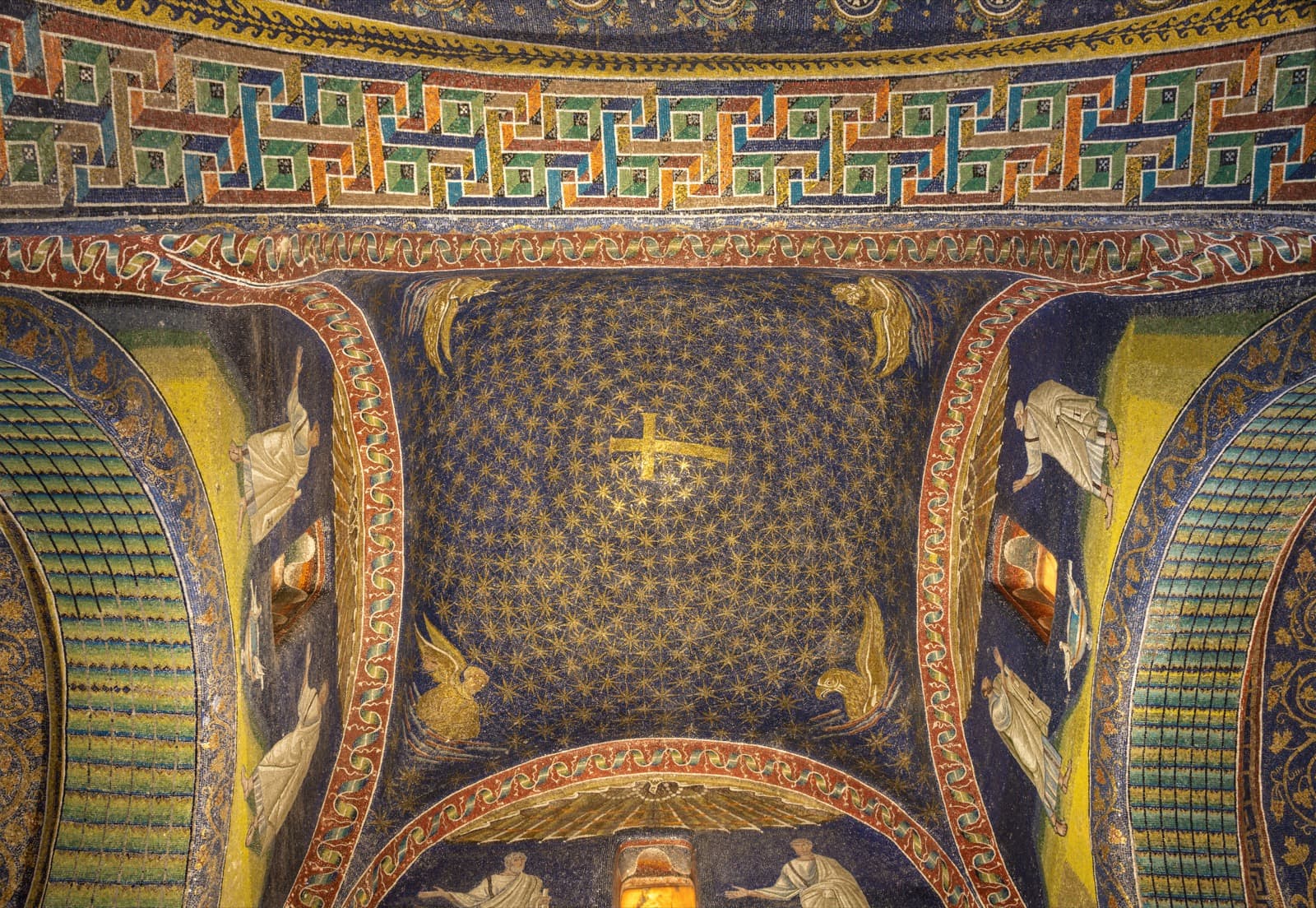
“Night and day, you are the one
Only you beneath the moon and under the sun
Whether near to me or far
It’s no matter darling where you are
I think of you night and day”
Let us now enter the Mausoleum of Galla Placidia to the music of Cole Porter, who apparently drew inspiration from the Ravenna monument for his famous song ‘Night and Day’.
Dating back to the 5th century, the Mausoleum is one of eight UNESCO monuments in the city where mosaic is the undisputed protagonist. And it is not hard to guess: one only has to cross the threshold of this small Latin cross-shaped building to be surrounded by myriads of multi-coloured tesserae.
Having admired the figures of Christ the Good Shepherd and Saint Lawrence the Martyr that stand out on opposing lunettes, let us lift our gaze upwards and dive into the starry sky of the dome. The wow effect is intensified by the yellowish light penetrating through the alabaster windows, welcoming visitors in a soft embrace.
Palazzo Milzetti - Faenza
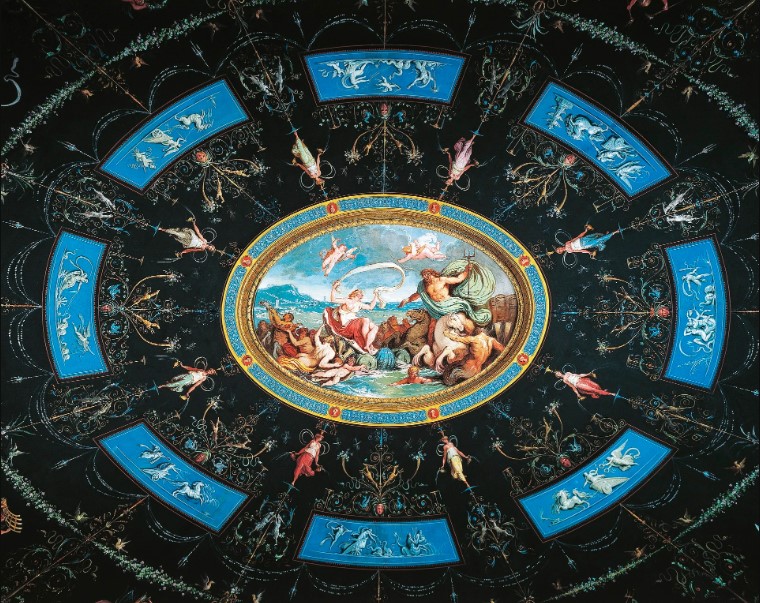
Moving from Ravenna to Faenza we take a leap forward in time to the Neoclassical period, represented by the decorations of Palazzo Milzetti, today the National Museum of the Neoclassical Age in Romagna.
The current appearance of this magnificent residence in Faenza is due to Nicola Milzetti and his son Francesco. At the turn of the 18th and 19th centuries, they undertook a thorough renovation of the building, entrusting it to the skilful hands of architect Giovanni Antonio Antolini and the brush of Felice Giani.
The result was a work of great visual impact, rich in frescoes and stuccoes with evocative historical and mythological themes. As with the Palazzo Ducale in Sassuolo, we recommend letting yourself be carried away by the charm of the numerous vaults unfolding in the museum. The most striking feature, however, is perhaps the oval antebathroom painted by Giani with grotesques and motifs inspired by Herculaneum art standing out against a black background.
Author

Maria Grazia Masotti
An eternal dreamer, but I try to stay grounded. I was raised in the countryside but I love big cities. I’m always ready for a trip, as long as it’s sustainable.
You may also like
Statue and Urban Sculptures in Emilia-Romagna
by Davide Marino /// July 30, 2024
The Most Beautiful Churches and Cathedrals in Emilia-Romagna
by Davide Marino /// September 20, 2018
Alla scoperta dei Portici di Bologna, Patrimonio UNESCO
by Redazione locale di Bologna /// May 28, 2020

Interested in our newsletter?
Every first of the month, an email (in Italian) with selected contents and upcoming events.
